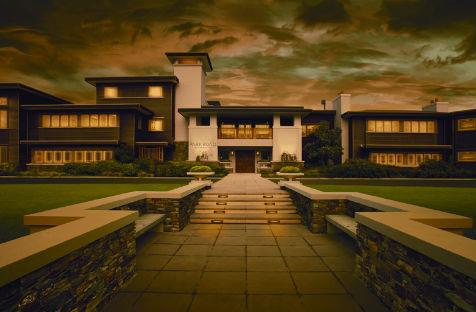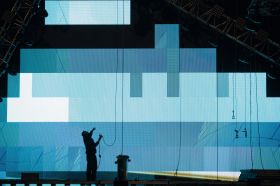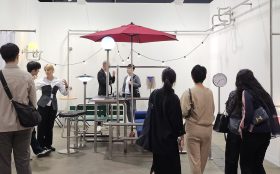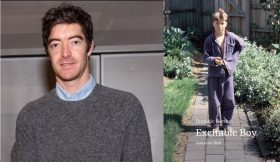‘Ideas are like photographs – they take time to develop,’ so what happens when film disappears and we move to the digital instant?
At the end of June 2013, Park Road Post Production in Wellington will close its film processing plant, whilst in Sydney, deluxe laboratory will cease processing film on 19th April 2013.
After these closures, all motion picture film processing in the Australasian region will need to be shipped to Asia or America. The ‘death of film’ has been coming – for decades and years and months. Now all of a sudden, it’s only a few short weeks until Australian and New Zealand filmmakers will no longer be able to have that experience of ‘real film. Well not readily anyway, as the extra impost of international shipping and additional insurance costs will deter all but the most fanatical and determined.
So, really, what’s the fuss, what’s the big deal? Isn’t digital as good as film now? Roger Deakins has pretty much moved on from film to the Arri Alexa (In Time, Skyfall) and Don McAlpine says he won’t go back to film, so it must be OK right?
Well, yes and no… I suggest the answer to that question depends on who you are and where you are in your trajectory in the screen business. So, indulge me in talking about where I am in the screen business and what I can see from where I stand.
I’ve been teaching full-time post graduate level cinematography at AFTRS for over eight years. In that time the cinematography course has changed from being firmly film centric with some SD video and has now expanded to include HD and a lot of digital. Digital which is mostly shot on high end digital cinema cameras with super 35mm sensors, as well as DSLRs and handicams. AFTRS invested in the RED ONE three years ago, mostly shooting 4K (depending on how you count the pixels), then the Sony PMW F3 and most recently the school acquired Arri Alexas.
The availability of high end digital cameras has certainly unshackled directors and crews from the constraint of a low shooting ratio arising from the hard costs of shooting on film – raw stock, processing and telecine / scanning are all un-avoidable costs. Shooting ratios have expanded from about 15 : 1 to a great deal more, varying from one project to another.
But the question is has this liberation brought about a corresponding increase in:
• Experimentation?
• Better storytelling?
• Depth of learning?
• More powerful works?
My experience is a definite no. There is no discernable increase in experimentation or better told stories arising in stories shot on digital systems.
What it has increased is:
• the amount of times where the director calls “keep rolling, just do it again” without giving any direction to actors or crew as to why, or how they should “do it again” differently and possibly better.
• significant increase in the amount of material the editors have to manage, including the number and variety of codecs on any given project, which brings with it a series of problems coupled with a substantial decrease in the proportion of useable material.
• The amount of time editors now have to spend managing data, including producing intermediate copies and deliverables, rather than editing.
• The amount of storage required, which can be huge if the data rates are high and there are many tens of projects in the data pipeline over the course of a year.
The pluses about shooting film in a learning environment are:
• It is the highest standard imaging technology for recording and nuancing colour and tonal range, so, the cinematographers particularly, but in fact all the key creatives are learning on the best imaging system possible
• The mechanics of film cameras are visible to the naked eye, which means step by step processes can be seen, so technical complexities are readily learnt
• It’s costly and this encourages placing a high value on it
• Being highly valued engenders respect for the format and a disciplined practice in shooting it, including thorough planning of all aspects of shooting
• Choosing to plan thoroughly means allowing more time for preproduction
• Allowing more time enables ideas to develop more
• The hardware is extremely robust and the risk of time lost to hardware failure is very low – no waiting on set for the camera to boot up
The minuses are:
• It’s costly
• The 24 hour delay, at minimum, in seeing the results
• Rarely being able to afford to reshoot something that doesn’t work technically or creatively
Allen Ginsberg commented that ‘ideas are like photographs – they take time to develop’. In this current era, it’s taken for granted that we will use incredible imaging technology – from the ipad to da Vinci Resolve to stills cameras that shoot HD movies. These systems deliver very high quality images in real time, in fact instantly. And oddly, we tend to have little or no sense of wonder or excitement that they do what they do. There may be two reasons for this.
Because we are totally surrounded by these devices, we very quickly take them for granted. And secondly, because the electronic foundations are invisible to the human eye, we have no way in, to comprehend just how remarkable the process really is. Contrast that with the alchemy of film developing in a chemical bath where an image emerges in front of your eyes. The sheer magic of something appearing out of nothing still resonates with us to this day.
So, that taking for granted of digital imaging systems carries through into failing to value the process. Being the first is valued. Instant results are valued. But not the journey that leads to the results. Very little of the constraints on creative capacity that I can see comes from the shooting format or media. It arises far more from the lack of time to actually research and develop ideas, image systems and story worlds. Shooting on film gives you permission to take more time to develop the layers of complexity that make screen stories really grab the audience. It’s not the only way you can make that time part of your artistic practice, but it sure does help.
Nick Oughton of Griffith University is currently researching the use of film amongst the 146 Film School members of CILECT ( from Lodz to UCLA to New York and London). Of the schools that responded to the survey, 80% reported they currently use film in their teaching programs and the vast majority of those schools expect to continue using it well into the foreseeable future, as long as film stocks and laboratory services remain available.
Their reasons for doing so are many including the precision, discipline, economy, organisation and planning, imagination, visualisation, creativity and communication skills which analogue acquisition encourages.
It’s one thing for Roger Deakins, with his incredible wealth of experience after shooting 48 feature films plus telemovies, series and documentaries, to decide that he can happily switch from film to digital. But it’s quite another thing for young filmmakers to never have the rich experience of working with all the benefits, pressures and constraints of the format. It is a loss and the depth and extent of its impact won’t show up next year or the one after. Rather it will become ever more apparent over the coming decades.





